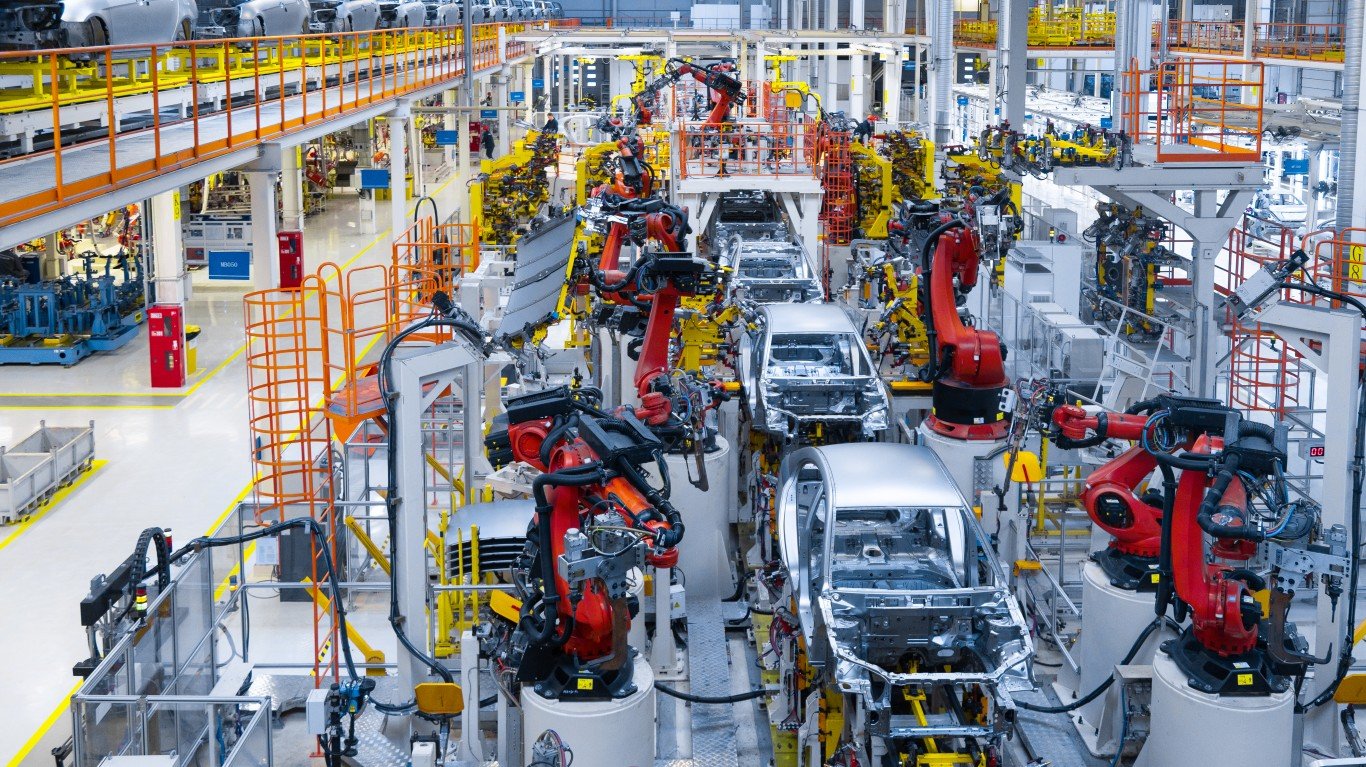Founded in the infancy of the automotive industry, the oldest car company in the USA stands as a testament to the enduring legacy of innovation and craftsmanship.
With roots tracing back decades, this pioneering company has played a pivotal role in shaping the landscape of American motoring.
From revolutionizing transportation to setting industry standards, its journey reflects the evolution of automotive engineering and the resilience of American ingenuity.
Join us as we delve into the rich history and milestones of the oldest car company in the USA, a journey marked by innovation, heritage, and a relentless pursuit of excellence.

Oldest Car Company in USA
The journey of automobile development began in 1672 with the invention of the first steam-powered vehicle.
This led to Nicolas-Joseph Cugnot creating the first steam-powered automobile capable of human transportation in 1769.
As the 19th century dawned, inventors expanded their horizons, crafting the de Rivaz engine, among the earliest internal combustion engines, and experimenting with electric motors.
In 1826, Samuel Brown tested the first industrially applied internal combustion engine, though only two were manufactured.
Progress faced setbacks in the mid-19th century due to resistance against large vehicles. However, work continued on internal combustion engines.
Engineers refined the engine, developing two- and four-cycle combustion engines and embracing gasoline as a fuel.
The birth of the modern car occurred in 1886 when Carl Benz introduced a practical, marketable gasoline-powered automobile and produced several identical copies.
In 1890, Gottlieb Daimler and Wilhelm Maybach founded Daimler Motoren Gesellschaft, known for its Mercedes-Benz brand after merging with Benz & Cie. in 1926.
From 1886 onward, numerous inventors and entrepreneurs entered the “horseless carriage” business in America and Europe.
Ransom E. Olds established Oldsmobile in 1897 and introduced the Curved Dash Oldsmobile in 1901. Olds pioneered assembly line production, making thousands of Oldsmobiles by 1903.
Although sources vary, approximately 19,000 Oldsmobiles were manufactured, with production peaking from 1903 to 1905 at up to 5,000 units annually.
In 1908, the Ford Motor Company revolutionized automobile production by launching the Ford Model T at a modest price.
Introducing an advanced moving assembly line in 1913 allowed Ford to slash the Model T’s price by almost 50%, making it the first mass-affordable automobile.
Power sources
Early automobile history focused on finding a reliable power source to propel vehicles.
In the 17th and 18th centuries, Ferdinand Verbiest built a steam-powered vehicle around 1672 as a toy for the Kangxi Emperor.
Although small-scale and unable to carry a driver, it is considered one of the earliest working steam-powered vehicles.
Larger steam-powered vehicles capable of transporting people and cargo emerged in the late 18th century.
Nicolas-Joseph Cugnot demonstrated his fardier à vapeur (“steam dray”), an experimental steam-driven artillery tractor, in 1770 and 1771.
However, Cugnot’s design was impractical, and his invention did not progress in France.
Innovation shifted to Great Britain, where William Murdoch built a working model of a steam carriage in Redruth by 1784.
Richard Trevithick further advanced steam-powered vehicles, running a full-sized vehicle on roads in Camborne by 1801.
Eras of invention
George B. Selden applied for a patent on May 8, 1879, covering the engine and its use in a four-wheeled car.
His application underwent multiple amendments, prolonging the legal process.
The patent was finally granted on November 5, 1895. Selden licensed his patent to most major American automakers, collecting fees on each car they produced.
This led to the formation of the Association of Licensed Automobile Manufacturers.
The Ford Motor Company challenged this patent in court and eventually won on appeal.
Henry Ford testified that the patent hindered rather than encouraged auto development in the United States.
The first automobiles were produced by Carl Benz in Germany in 1888 and, under license from Benz, in France by Emile Roger.
Other early automobile pioneers included tricycle builders Rudolf Egg, Edward Butler, and Léon Bollée. By 1900, mass production of automobiles had commenced in France and the United States.
Panhard et Levassor, formed in France in 1889, was the first company exclusively dedicated to building automobiles.
It is credited with introducing the first four-cylinder engine.
Peugeot followed two years later. By the early 20th century, the automobile industry was thriving in Western Europe, particularly in France.
Examples of modern cars
The Oldsmobile Toronado, produced from 1966 to 1992, was the first modern-era American car with front-wheel drive. It also introduced the electronic antilock braking system and airbag.
The Mercedes-Benz S-Class, manufactured from 1972 to the present, features innovations such as seat belt pretensioners and electronic traction control systems.
Since 1975, the BMW 3 Series has consistently appeared on Car and Driver magazine’s annual Ten Best list, earning the accolade 17 times.
The Honda Accord saloon/sedan, in production since 1977, gained popularity as a Japanese sedan in the US market.
Chrysler minivans, introduced in 1983 and continuing to the present, revolutionized the market with their two-box minivan design, nearly displacing traditional station wagons.
The Renault Espace, produced from 1984 to the present, was the first mass-produced one-volume car in the noncommercial MPV class.
The Ford Taurus, manufactured from 1986 to 2019, was a midsized front-wheel-drive sedan that dominated the US market in the late 1980s.
Since its launch in 1997, the Toyota Prius has become a popular hybrid electric vehicle in many markets.
The Ford Focus, introduced in 1998 and continuing to the present, is a popular hatchback and Ford’s bestselling world car.
The Tesla Roadster, produced from 2008 to 2012, was the first highway-capable all-electric vehicle in serial production for sale in the US during the modern era, with approximately 2,500 units sold worldwide.
The BYD F3DM, manufactured from 2008 to 2013, was the first highway-capable series production plug-in hybrid, launched in China in December 2008 and selling over 2,300 units.
Since 2009, the Mitsubishi i-MiEV has been in production as the first highway-capable series production all-electric car, initially launched in Japan and later in Europe as the Peugeot iOn and Citroën C-Zero.
